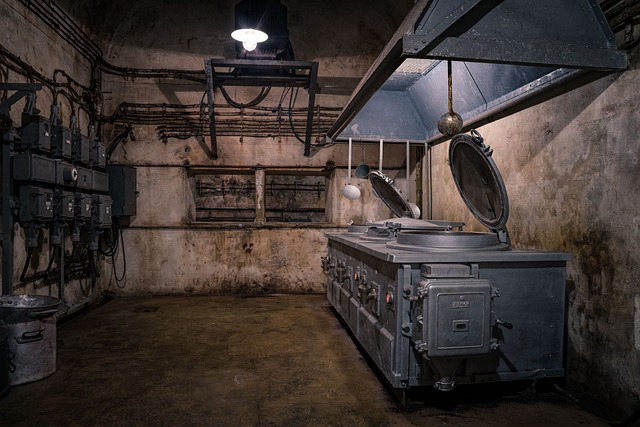Ground-Penetrating Radar (GPR) is a non-destructive technology that uses high-frequency radio waves to create detailed images of what lies beneath the surface, making it ideal for advanced utility detection. Safer than X-rays, GPR can penetrate deep and is used in civil engineering, construction, and archaeology to locate buried pipes, cables, and infrastructure precisely. Its capabilities help avoid damage during excavation, enable proactive maintenance, and assist in planning and design processes. However, its depth and resolution depend on frequency, and it requires skilled operators and best practices for optimal results.
“Ground-Penetrating Radar (GPR) is transforming how we visualize and interact with the unseen layers of our environment. This innovative technology offers a non-invasive method for detailed subsurface imaging, revealing critical data about underground structures and utilities. In this article, we explore GPR’s capabilities in the context of advanced utility detection. From its underlying principles to real-world applications, we’ll uncover how GPR is revolutionizing industries by providing accurate, high-resolution insights into what lies beneath.”
Understanding Ground-Penetrating Radar (GPR) Technology
Ground-Penetrating Radar (GPR) is a powerful tool for creating detailed images of what lies beneath the surface. This technology uses high-frequency radio waves to penetrate the earth, similar to how X-rays create images of internal structures. However, GPR waves can travel much deeper and are less ionizing than X-rays, making it safer and more suitable for environmental and civil engineering applications. The radar sends out signals that bounce off underground objects or layers, providing valuable data about their location, size, and composition.
GPR is particularly useful in advanced utility detection, helping professionals locate buried pipes, cables, and other critical infrastructure with precision. By mapping the subsurface in real-time, GPR enables safe and efficient excavation projects, reduces the risk of damaging hidden utilities, and aids in planning and design processes. This technology’s ability to provide non-destructive imaging makes it an indispensable asset in various industries, including construction, environmental remediation, and archaeology.
Applications of GPR in Utility Detection
Ground-penetrating radar (GPR) has emerged as a powerful tool for detailed subsurface imaging, offering unprecedented insights into what lies beneath our feet. In the realm of utility detection, GPR plays a pivotal role in identifying and mapping underground utilities with remarkable accuracy. This advanced utility detection capability is particularly valuable in urban settings where extensive underground infrastructure is common. By transmitting electromagnetic waves into the ground and analyzing the returned signals, GPR can create high-resolution images of pipes, cables, and other critical utilities, ensuring their safe and efficient management.
The applications of GPR in utility detection are vast. It aids in locating buried assets, such as water mains, gas pipelines, power cables, and telecommunications lines, even under dense vegetation or concrete surfaces. This non-invasive technique also helps in avoiding costly damage during construction projects by providing real-time data on the location and depth of underground utilities. Moreover, GPR can detect anomalies like corrosion, leaks, or damage to these essential services, enabling proactive maintenance and repair, thus enhancing overall infrastructure reliability.
Advantages and Limitations of Using GPR
Ground-penetrating radar (GPR) offers a powerful tool for detailed subsurface imaging, with several key advantages. It can non-invasively penetrate various materials, from soil to concrete, providing high-resolution data on underground structures and objects. This makes GPR invaluable for applications like advanced utility detection, mapping archaeological sites, and identifying buried features without disturbing the surface. Additionally, it’s a cost-effective solution compared to traditional methods, offering a fast and efficient way to gather precise subsurface information.
Despite its strengths, GPR also has limitations. Its imaging depth is influenced by the frequency of the radar signal; lower frequencies penetrate deeper but are more susceptible to interference from water and other high-conductivity materials. Moreover, GPR resolution decreases with depth due to signal attenuation, making it less effective for detecting fine details at greater depths. Surface conditions like rough terrain or metal contaminants can also degrade image quality. Furthermore, GPR data interpretation requires specialized expertise to ensure accurate interpretation of the images.
Best Practices for Effective GPR Implementation
When implementing Ground-Penetrating Radar (GPR) for detailed subsurface imaging, several best practices ensure optimal results. First, thorough planning is crucial. This includes defining clear objectives, understanding site conditions, and selecting the appropriate GPR system for the task at hand. Pre-scanning to identify potential interference sources and target areas is essential, as well as ensuring proper ground preparation to maximize signal penetration.
Additionally, skilled operators are vital for effective GPR implementation. They should be trained in using advanced utility detection techniques, understanding radar signals, and interpreting data accurately. Regular maintenance of equipment and calibration checks guarantee consistent performance throughout the project. Furthermore, utilizing specialized software for data processing and visualization enhances the quality of subsurface images, making it easier to identify and map structures below the surface.
Ground-penetrating radar (GPR) offers a powerful tool for detailed subsurface imaging, revolutionizing the way we detect and map utilities. Its ability to provide high-resolution images of underground structures makes it an indispensable asset for various industries. By leveraging GPR technology, professionals can achieve advanced utility detection, ensuring safer and more efficient infrastructure management. Adhering to best practices and understanding both the advantages and limitations will maximize the effectiveness of GPR implementation, fostering a new era in precision subsurface exploration.
